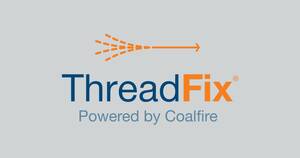Cybersecurity
General Overview of Vulnerability Management

In a world where most companies take nearly six months to detect a data breach, establishing a comprehensive and continuous process for identifying, classifying, mitigating and preventing security vulnerabilities within an organization can help prevent current cybersecurity challenges. Vulnerability management programs can manage the complexities of a business’s vast IT network, applications, containers or cloud systems.
Organizations should understand their security weaknesses, make risk assessments, and put protections in place to reduce the likelihood of data leaks or unauthorized access to their applications and assets. Managing vulnerabilities helps ensure security and provide organizations with valuable information about their weaknesses.
Establishing a vulnerability management framework can be broken down into the following steps:
Policy Making
Making policies is a necessary part of vulnerability management. The purpose of policymaking is to establish specific rules for the review, evaluation, application and verification of updates within your systems that will mitigate vulnerabilities and the risks connected to them. Having security policies in place within an organization will support your security efforts and help identify the risks through monitoring and reporting tools. Check out our policy video to learn about the four different kinds of policies we assist security teams with.
Discovery: Define Your Baseline
You can’t properly secure what you don’t know about, so developing a baseline and identifying all assets across your infrastructure is crucial. Part of taking inventory of your assets and applications includes determining the importance of each asset to your organization and deciding who can access them.
Discovery should include a scan of your applications and the networks that support them. Scan every device connected to your network to discover the possible weaknesses and vulnerabilities within the infrastructure to reduce the risk of attacks.
Prioritize by Risk
After you have identified all vulnerability risks, you need to begin reducing your attack surface by evaluating the severity of those threats. This list could potentially be extremely long, so this evaluation can help you determine what should be a priority in the security efforts made by your dev and sec teams. Start by focusing on the assets that are higher risk and present the most harm to the organization. Calculate the relative priority of each vulnerability because to defend everything means to defend nothing.
The ThreadFix® platform can help you separate the vulnerabilities into low, medium, and high-risk categories as well as indicate and remember false positives. Prioritizing does not mean to neglect the less pressing issues, but rather, it’s a time management practice aimed to improve mean time to remediation (MTTR). It helps to identify which vulnerabilities need to be addressed immediately and which could wait. ThreadFix helps organizations communicate vulnerabilities to development teams in the defect trackers they are already using. Along with priority, ThreadFix helps you bundle vulnerably by type, making it easier for development teams to resolve like vulnerabilities together,
Response
After you have prioritized the vulnerabilities based on how critical they are, it’s time for your team to focus its remediation on the largest risks in your network. Once you remediate (or patch) a vulnerability, you should conduct a penetration test to verify and confirm that the patch is valid and no longer a risk before progressing to the next vulnerability on the list.
When remediation isn’t successful, your best option is mitigation. This will reduce the probability that a vulnerability will be exploited by applying offsetting controls to lessen the impact of an exploitation. This is a temporary solution that organizations can use until they remediate the vulnerability completely.
Report
The best way to improve your security and responses in the future is to report vulnerabilities. The record of vulnerabilities gives your development and security teams greater insights into better accuracy and speed in managing security risks.
Uncover Vulnerabilities Before It’s Too Late
Anyone who has assets connected to the internet needs a vulnerability management program, and having one enables an organization to efficiently manage potential threats caused by unaddressed problems. With ThreadFix, we can help you better reduce the exposure from your attack surface. Contact us to find out more.